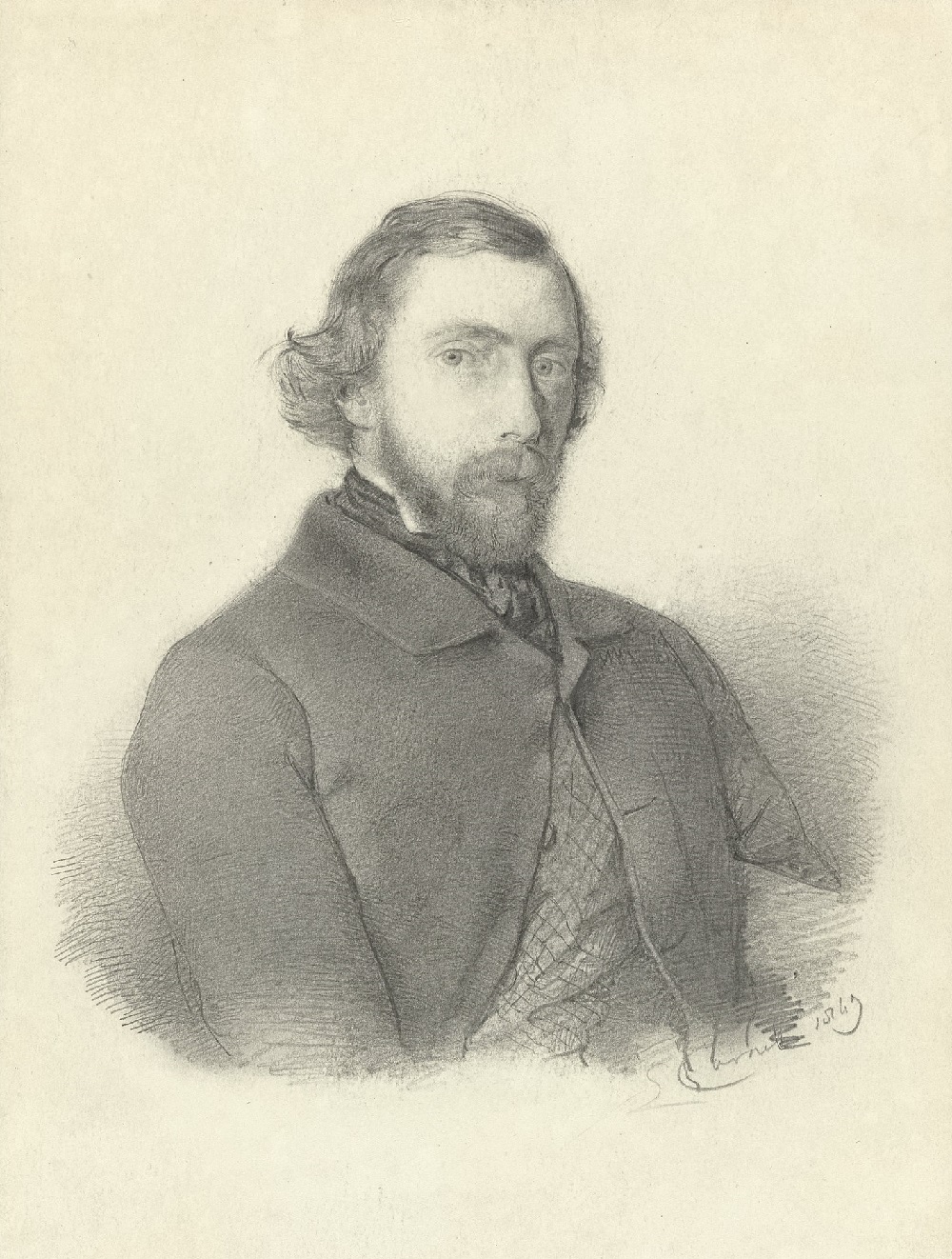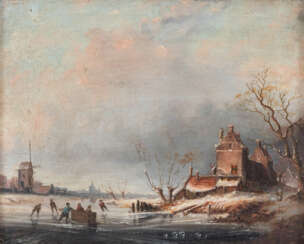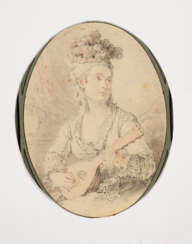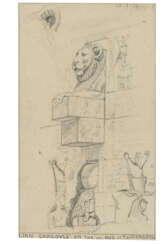1811

Johann Gustav Lange was a 19th century German landscape painter.


Edward William Cooke, a distinguished English artist, is celebrated for his mastery in maritime painting. His upbringing in an artistic family, with his father and uncle being notable engravers, significantly influenced his early development as an artist. Cooke's talent extended beyond the marine realm, as he was proficient in geological and botanical illustrations as well.
His works, which often depicted detailed ships and coastal scenes, were heavily inspired by 17th-century Dutch marine artists, a style that became synonymous with his name. Edward William Cooke's paintings, such as "Beaching a Pink at Scheveningen," exhibited at the Royal Academy, reflect his meticulous study of natural and light effects, particularly influenced by his travels across Europe, including the Netherlands, Scandinavia, and Venice.
Edward William Cooke's diverse interests led him to become a Fellow of several prestigious societies, including the Linnean Society, the Geological Society, and the Zoological Society. His contributions to the arts and sciences were further acknowledged when he was elected a Fellow of the Royal Society in 1863.
For art and antique enthusiasts, Edward William Cooke's legacy is a testament to his profound impact on maritime art, making his works valuable pieces in collections worldwide. If you're keen on exploring more about Cooke's art and contributions, consider signing up for updates on new product sales and auction events related to his works.


Jan Jacob Spöhler was a 19th-century painter from the Northern Netherlands.


Jean-Baptiste Marie Huet was a French painter, engraver and designer associated with pastoral and genre scenes of animals in the Rococo manner, influenced by François Boucher.


Jan Jacob Spöhler was a 19th-century painter from the Northern Netherlands.


Eugène Edouard Soulès was a French landscape painter.


Carl Morgenstern was a German landscape painter of the Romantic period. His father, Johann Friedrich Morgenstern, was an architectural and landscape painter, and Carl received painting and drawing lessons from him at a young age.
At the age of 21 Carl went to Munich and became a pupil of the landscape painter Carl Rottmann. After a three-year stay in Italy, he returned to Frankfurt am Main, where he established himself as an artist and was later appointed professor.
His paintings from the early period mainly show landscapes, which surprise with special light effects and earned him the nickname "Italianist". Despite his desire for artistic innovation, he later devoted himself mainly to repeating popular motifs in order to satisfy his patrons.
Some of his most important works are views of Frankfurt am Main and the city's surroundings, as well as landscapes from the Taunus and along the Rhine.


Carl Morgenstern was a German landscape painter of the Romantic period. His father, Johann Friedrich Morgenstern, was an architectural and landscape painter, and Carl received painting and drawing lessons from him at a young age.
At the age of 21 Carl went to Munich and became a pupil of the landscape painter Carl Rottmann. After a three-year stay in Italy, he returned to Frankfurt am Main, where he established himself as an artist and was later appointed professor.
His paintings from the early period mainly show landscapes, which surprise with special light effects and earned him the nickname "Italianist". Despite his desire for artistic innovation, he later devoted himself mainly to repeating popular motifs in order to satisfy his patrons.
Some of his most important works are views of Frankfurt am Main and the city's surroundings, as well as landscapes from the Taunus and along the Rhine.


Carl Morgenstern was a German landscape painter of the Romantic period. His father, Johann Friedrich Morgenstern, was an architectural and landscape painter, and Carl received painting and drawing lessons from him at a young age.
At the age of 21 Carl went to Munich and became a pupil of the landscape painter Carl Rottmann. After a three-year stay in Italy, he returned to Frankfurt am Main, where he established himself as an artist and was later appointed professor.
His paintings from the early period mainly show landscapes, which surprise with special light effects and earned him the nickname "Italianist". Despite his desire for artistic innovation, he later devoted himself mainly to repeating popular motifs in order to satisfy his patrons.
Some of his most important works are views of Frankfurt am Main and the city's surroundings, as well as landscapes from the Taunus and along the Rhine.


Jean-Baptiste Marie Huet was a French painter, engraver and designer associated with pastoral and genre scenes of animals in the Rococo manner, influenced by François Boucher.


Jean-Baptiste Marie Huet was a French painter, engraver and designer associated with pastoral and genre scenes of animals in the Rococo manner, influenced by François Boucher.


Jean-Baptiste Marie Huet was a French painter, engraver and designer associated with pastoral and genre scenes of animals in the Rococo manner, influenced by François Boucher.




Carl Morgenstern was a German landscape painter of the Romantic period. His father, Johann Friedrich Morgenstern, was an architectural and landscape painter, and Carl received painting and drawing lessons from him at a young age.
At the age of 21 Carl went to Munich and became a pupil of the landscape painter Carl Rottmann. After a three-year stay in Italy, he returned to Frankfurt am Main, where he established himself as an artist and was later appointed professor.
His paintings from the early period mainly show landscapes, which surprise with special light effects and earned him the nickname "Italianist". Despite his desire for artistic innovation, he later devoted himself mainly to repeating popular motifs in order to satisfy his patrons.
Some of his most important works are views of Frankfurt am Main and the city's surroundings, as well as landscapes from the Taunus and along the Rhine.


Jean-Baptiste Marie Huet was a French painter, engraver and designer associated with pastoral and genre scenes of animals in the Rococo manner, influenced by François Boucher.


Jean-Baptiste Marie Huet was a French painter, engraver and designer associated with pastoral and genre scenes of animals in the Rococo manner, influenced by François Boucher.


Jean-Baptiste Marie Huet was a French painter, engraver and designer associated with pastoral and genre scenes of animals in the Rococo manner, influenced by François Boucher.


Edward William Cooke, a distinguished English artist, is celebrated for his mastery in maritime painting. His upbringing in an artistic family, with his father and uncle being notable engravers, significantly influenced his early development as an artist. Cooke's talent extended beyond the marine realm, as he was proficient in geological and botanical illustrations as well.
His works, which often depicted detailed ships and coastal scenes, were heavily inspired by 17th-century Dutch marine artists, a style that became synonymous with his name. Edward William Cooke's paintings, such as "Beaching a Pink at Scheveningen," exhibited at the Royal Academy, reflect his meticulous study of natural and light effects, particularly influenced by his travels across Europe, including the Netherlands, Scandinavia, and Venice.
Edward William Cooke's diverse interests led him to become a Fellow of several prestigious societies, including the Linnean Society, the Geological Society, and the Zoological Society. His contributions to the arts and sciences were further acknowledged when he was elected a Fellow of the Royal Society in 1863.
For art and antique enthusiasts, Edward William Cooke's legacy is a testament to his profound impact on maritime art, making his works valuable pieces in collections worldwide. If you're keen on exploring more about Cooke's art and contributions, consider signing up for updates on new product sales and auction events related to his works.


Carl Morgenstern was a German landscape painter of the Romantic period. His father, Johann Friedrich Morgenstern, was an architectural and landscape painter, and Carl received painting and drawing lessons from him at a young age.
At the age of 21 Carl went to Munich and became a pupil of the landscape painter Carl Rottmann. After a three-year stay in Italy, he returned to Frankfurt am Main, where he established himself as an artist and was later appointed professor.
His paintings from the early period mainly show landscapes, which surprise with special light effects and earned him the nickname "Italianist". Despite his desire for artistic innovation, he later devoted himself mainly to repeating popular motifs in order to satisfy his patrons.
Some of his most important works are views of Frankfurt am Main and the city's surroundings, as well as landscapes from the Taunus and along the Rhine.


Edward William Cooke, a distinguished English artist, is celebrated for his mastery in maritime painting. His upbringing in an artistic family, with his father and uncle being notable engravers, significantly influenced his early development as an artist. Cooke's talent extended beyond the marine realm, as he was proficient in geological and botanical illustrations as well.
His works, which often depicted detailed ships and coastal scenes, were heavily inspired by 17th-century Dutch marine artists, a style that became synonymous with his name. Edward William Cooke's paintings, such as "Beaching a Pink at Scheveningen," exhibited at the Royal Academy, reflect his meticulous study of natural and light effects, particularly influenced by his travels across Europe, including the Netherlands, Scandinavia, and Venice.
Edward William Cooke's diverse interests led him to become a Fellow of several prestigious societies, including the Linnean Society, the Geological Society, and the Zoological Society. His contributions to the arts and sciences were further acknowledged when he was elected a Fellow of the Royal Society in 1863.
For art and antique enthusiasts, Edward William Cooke's legacy is a testament to his profound impact on maritime art, making his works valuable pieces in collections worldwide. If you're keen on exploring more about Cooke's art and contributions, consider signing up for updates on new product sales and auction events related to his works.


Edward William Cooke, a distinguished English artist, is celebrated for his mastery in maritime painting. His upbringing in an artistic family, with his father and uncle being notable engravers, significantly influenced his early development as an artist. Cooke's talent extended beyond the marine realm, as he was proficient in geological and botanical illustrations as well.
His works, which often depicted detailed ships and coastal scenes, were heavily inspired by 17th-century Dutch marine artists, a style that became synonymous with his name. Edward William Cooke's paintings, such as "Beaching a Pink at Scheveningen," exhibited at the Royal Academy, reflect his meticulous study of natural and light effects, particularly influenced by his travels across Europe, including the Netherlands, Scandinavia, and Venice.
Edward William Cooke's diverse interests led him to become a Fellow of several prestigious societies, including the Linnean Society, the Geological Society, and the Zoological Society. His contributions to the arts and sciences were further acknowledged when he was elected a Fellow of the Royal Society in 1863.
For art and antique enthusiasts, Edward William Cooke's legacy is a testament to his profound impact on maritime art, making his works valuable pieces in collections worldwide. If you're keen on exploring more about Cooke's art and contributions, consider signing up for updates on new product sales and auction events related to his works.


Edward William Cooke, a distinguished English artist, is celebrated for his mastery in maritime painting. His upbringing in an artistic family, with his father and uncle being notable engravers, significantly influenced his early development as an artist. Cooke's talent extended beyond the marine realm, as he was proficient in geological and botanical illustrations as well.
His works, which often depicted detailed ships and coastal scenes, were heavily inspired by 17th-century Dutch marine artists, a style that became synonymous with his name. Edward William Cooke's paintings, such as "Beaching a Pink at Scheveningen," exhibited at the Royal Academy, reflect his meticulous study of natural and light effects, particularly influenced by his travels across Europe, including the Netherlands, Scandinavia, and Venice.
Edward William Cooke's diverse interests led him to become a Fellow of several prestigious societies, including the Linnean Society, the Geological Society, and the Zoological Society. His contributions to the arts and sciences were further acknowledged when he was elected a Fellow of the Royal Society in 1863.
For art and antique enthusiasts, Edward William Cooke's legacy is a testament to his profound impact on maritime art, making his works valuable pieces in collections worldwide. If you're keen on exploring more about Cooke's art and contributions, consider signing up for updates on new product sales and auction events related to his works.


Edward William Cooke, a distinguished English artist, is celebrated for his mastery in maritime painting. His upbringing in an artistic family, with his father and uncle being notable engravers, significantly influenced his early development as an artist. Cooke's talent extended beyond the marine realm, as he was proficient in geological and botanical illustrations as well.
His works, which often depicted detailed ships and coastal scenes, were heavily inspired by 17th-century Dutch marine artists, a style that became synonymous with his name. Edward William Cooke's paintings, such as "Beaching a Pink at Scheveningen," exhibited at the Royal Academy, reflect his meticulous study of natural and light effects, particularly influenced by his travels across Europe, including the Netherlands, Scandinavia, and Venice.
Edward William Cooke's diverse interests led him to become a Fellow of several prestigious societies, including the Linnean Society, the Geological Society, and the Zoological Society. His contributions to the arts and sciences were further acknowledged when he was elected a Fellow of the Royal Society in 1863.
For art and antique enthusiasts, Edward William Cooke's legacy is a testament to his profound impact on maritime art, making his works valuable pieces in collections worldwide. If you're keen on exploring more about Cooke's art and contributions, consider signing up for updates on new product sales and auction events related to his works.




































































